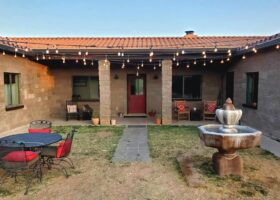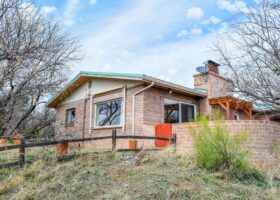Sonoita is located in Santa Cruz County in the southernmost central part of Arizona. While the state’s smallest county, Santa Cruz County is also one of Arizona’s most diverse and interesting destinations, offering an eclectic blend of history, culture, art, recreation, shopping, cuisine and entertainment in a beautiful and relaxing setting. From the artist colony of Tubac to the historic national monuments at Tumacacori, to the mountain and birding town of Patagonia, to Arizona’s wine country in Sonoita & Elgin, a journey though Santa Cruz County will intrigue, stimulate and satisfy the senses!
The history of the region dates back to the cultures of the Apache, Yaqui and Hohokam peoples who built their communities along the Santa Cruz River, Sonoita Creek and Harshaw Creek, whose waters flowed year round and provided ideal sites for agriculture and ranching.
In 1539 the Spanish explorer and Franciscan monk, Fray Marcos de Niza, was the first European to visit the area, entering near present-day Lochiel on the Mexican border. In 1752, after an uprising by the Pima Indians, the Spanish Crown established New Spain’s northernmost outpost and Europe’s first settlement in Arizona at what is now Tubac. By 1853, the Gadsden Purchase formed the southeastern corner of Arizona, then Mexico, making it part of the United States. Santa Cruz County, created in 1899 by Arizona’s 20th Territorial Assembly, is named after the Santa Cruz River which was named in the late 1600s by Father Kino. Santa Cruz means “holy cross” in Spanish.
Santa Cruz County has something for everyone from bikers and hikers to birdwatchers and history enthusiasts. Each community has its own unique personality and a drive through Santa Cruz County provides travelers with extraordinary vistas of color and beauty. Today, the largest communities in Santa Cruz County are Amado, Tubac, Nogales, Rio Rico, Patagonia, and Sonoita/Elgin.
You can learn more about Santa Cruz County on the county website.








